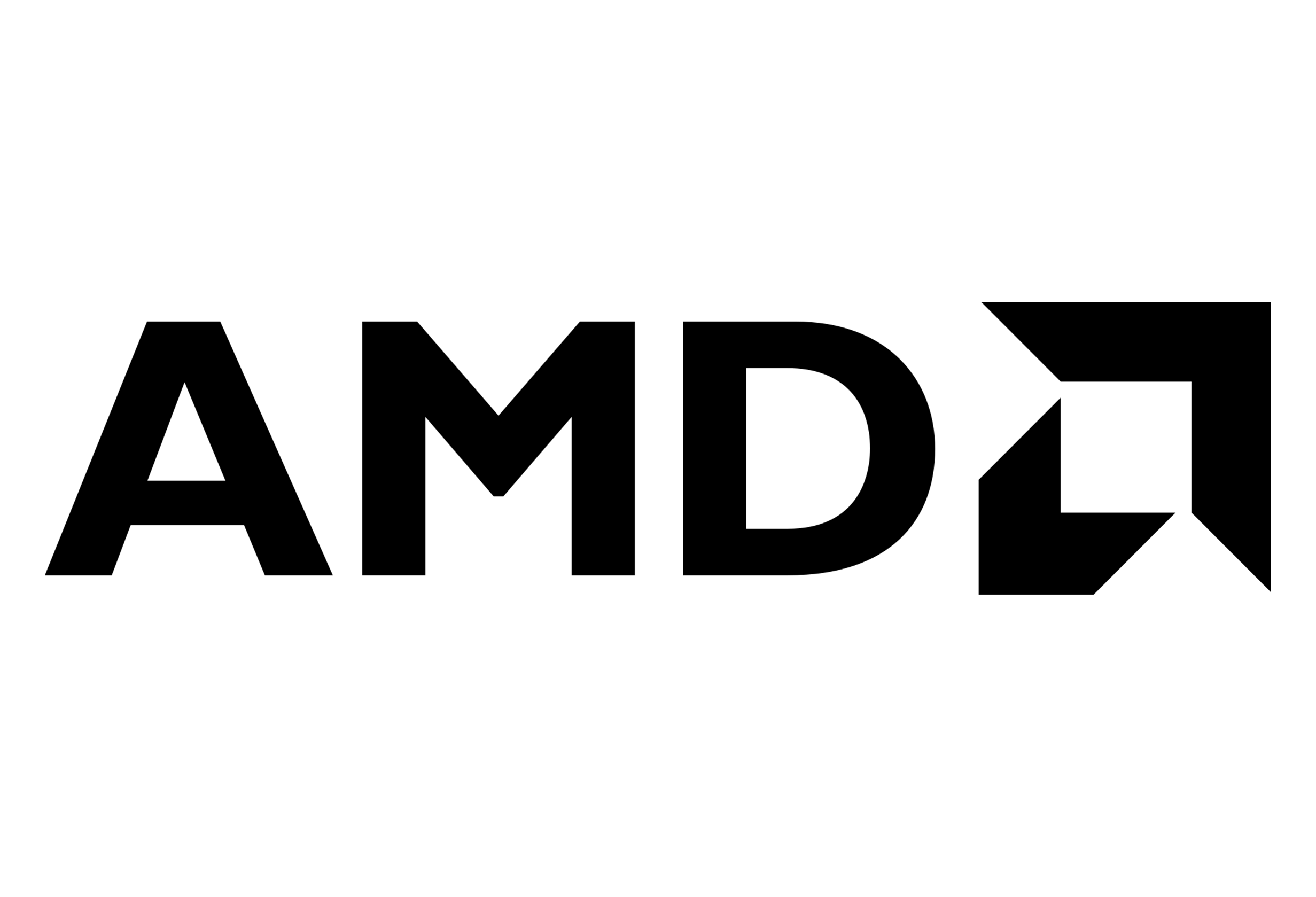ꟷ โปรเซสเซอร์ 2nd Gen AMD EPYC™ และกราฟิกการ์ด AMD Radeon™ Pro เพิ่มพลังการประมวลผลให้กับอินสแตนซ์ใหม่ Amazon EC2 G4ad ด้วยประสิทธิภาพการแสดงผลด้านกราฟิกสูงขึ้นถึง 40% ꟷ
ꟷ โซลูชั่น Amazon GameLift ใช้ประสิทธิภาพการประมวลผลจากขุมพลังโปรเซสเซอร์ 2nd Gen AMD EPYC™ สำหรับเป็นโฮสต์เซิร์ฟเวอร์เกม ꟷ
กรุงเทพฯ, ประเทศไทย – 7 ธันวาคม 2563 – AMD (NASDAQ: AMD) ประกาศว่า Amazon Web Services หรือ AWS ได้ขยายความร่วมมือการใช้ผลิตภัณฑ์ AMD บนอินสแตนซ์ระบบคลาวด์ใหม่ Amazon Elastic Compute Cloud (Amazon EC2) ในรุ่น Amazon EC2 G4ad เพื่อใช้ในงานเวิร์คโหลดด้านกราฟิก โดยผลิตภัณฑ์ของ AMD จะเป็นตัวขับเคลื่อนประสิทธิภาพการทำงานผลิตภัณฑ์อินสแตนซ์กลุ่ม Amazon EC2 จำนวน 8 รุ่น ในกว่า 20 สาขาทั่วโลกของ AWS ทั้งนี้ AMD ประกาศว่าโซลูชั่น Amazon GameLift ซึ่งเป็นโซลูชั่นสำหรับการเป็นโฮสต์เซิร์ฟเวอร์เกมโดยเฉพาะด้วยระบบการจัดการครบวงจรนั้นกำลังจะเปิดบริการโฮสต์วิดีโอเกมที่ลูกค้า สามารถเข้าถึงอินสแตนซ์ Amazon EC2 C5a, M5a และ R5a ซึ่งใช้ประสิทธิภาพการประมวลผลจาก โปรเซสเซอร์ AMD EPYC
นายฟอร์เรสต์ นอร์รอด (Forrest Norrod) รองประธานอาวุโสและผู้จัดการทั่วไปฝ่าย Data Centre และ Embedded Solution Business Group บริษัท AMD กล่าวว่า “วันนี้ AMD และ AWS ได้ต่อยอดขยายความร่วมมืออันแข็งแกร่งที่เริ่มไว้เมื่อปี 2560 เป็นเครื่องพิสูจน์ถึงประสิทธิภาพและการพัฒนาอย่างไม่หยุดยั้งที่ AMD ตั้งใจนำเสนอให้กับลูกค้าของเรา เครื่องอินสแตนซ์ Amazon EC2 G4ad เป็นอินสแตนซ์ตัวแรกที่ใช้ประสิทธิภาพการประมวลผลด้วยโปรเซสเซอร์ AMD EPYC และกราฟิกการ์ด AMD Radeon Pro และเพิ่มในอินสแตนซ์ที่ใช้โปรเซสเซอร์ EPYC รุ่นก่อนหน้า แสดงถึงประสิทธิภาพการประมวลผลสุดล้ำ และความคุ้มค่าของประสิทธิภาพต่อราคาที่ยอดเยี่ยมของโปรเซสเซอร์และกราฟิกการ์ด AMD ที่ส่งมอบให้แก่ลูกค้าของ AWS”
นายเดวิด บราวน์ รองประธาน กลุ่มผลิตภัณฑ์อินสแตนซ์ Amazon EC2 บริษัท AWS กล่าวว่า “ด้วยประสิทธิภาพการประมวลผลอันยอดเยี่ยมของโปรเซสเซอร์ AMD EPYC และกราฟิกการ์ด AMD Radeon Pro ทำให้ AWS สามารถสร้างสรรค์ผลิตภัณฑ์อินสแตนซ์ใหม่ที่มุ่งเน้นด้านกราฟิก และช่วยให้ตอกย้ำความเป็นผู้นำในด้านความคุ้มค่าของประสิทธิภาพต่อราคาตามที่ลูกค้าต้องการได้ เรายินดีมากที่ได้ร่วมมือกับ AMD อย่างต่อเนื่อง และทำให้อินสแตนซ์ Amazon EC2 G4ad ของเรากลายเป็นตัวเลือกด้านประสิทธิภาพต่อราคาที่ดีที่สุดในอุตสาหกรรมกลุ่มแอปพลิเคชั่นด้านกราฟิก”
อินสแตนซ์ใหม่ Amazon EC2 G4ad
อินสแตนซ์ใหม่ Amazon EC2 G4ad ที่นำเสนอประสิทธิภาพการประมวลผลด้วยโปรเซสเซอร์ 2nd Gen AMD EPYC และกราฟิกการ์ด AMD Radeon™ Pro V520 จะพร้อมวางจำหน่ายปลายเดือนนี้ ซึ่งเป็นอินสแตนซ์ AWS ตัวแรกที่ขับเคลื่อนประสิทธิภาพด้วยโปรเซสเซอร์และกราฟิกการ์ดกระบวนการผลิต 7nm
- อินสแตนซ์ Amazon EC2 G4ad สร้างขึ้นมาเพื่อรองรับเวิร์คโหลดด้านกราฟิกคุณภาพสูงและส่งมอบประสิทธิภาพต่อราคาที่ดีขึ้นถึง 45% และประสิทธิภาพการแสดงผลด้านกราฟิกที่ดีขึ้นถึง 40% เมื่อนำไปเทียบกับกราฟิกการ์ดรุ่นก่อนหน้า สำหรับการใช้งานบนแอปพลิเคชั่นด้านเวิร์คสเตชั่นและซอฟต์แวร์การสร้างวิดีโอเกมแบบเรียลไทม์
- พัฒนาบนสถาปัตยกรรม AMD RDNA กราฟิกการ์ด AMD Radeon™ Pro V520 สามารถส่งมอบการตอบสนองประสบการณ์การใช้งานด้านเวิร์คสเตชั่นบนระบบคลาวด์ได้อย่างดีเยี่ยมเพื่อรองรับความต้องการด้านเวิร์คโหลดที่มากที่สุด พร้อมด้วยความน่าเชื่อถือในระดับองค์กร
- ภายในอินสแตนซ์มาพร้อมซอฟต์แวร์ AMD Radeon™ Pro Software for Enterprise โดยที่ไม่มีค่าใช้จ่ายเพิ่มเติม รองรับการทำงานในระดับมืออาชีพบนแอปพลิเคชั่นระดับเวิร์คสเตชั่นและ API กราฟิกรุ่นล่าสุด เช่น DirectX®, OpenGL® และ Vulkan® ที่นำเสนอการแสดงผลด้านกราฟิกในระดับมืออาชีพสำหรับกลุ่มงานด้านเวอร์ชวลเวิร์คสเตชั่น
คุณสามารถศึกษาข้อมูลเพิ่มเติมเกี่ยวกับความร่วมมือระหว่าง AMD และ AWS ได้ในวิดีโอการสัมภาษณ์ระหว่าง ลิซ่าซู ซีอีโอ บริษัท AMD และ เดวิด บราวน์ รองประธานกลุ่มผลิตภัณฑ์อินสแตนซ์ Amazon EC2 บริษัท AWS ซึ่งเป็นส่วนหนึ่งของ AWS Virtual re:Invent ที่ผ่านมา
Amazon GameLift
ฟีเจอร์ Amazon GameLift พร้อมให้บริการการเข้าถึงด้านโฮสต์วิดีโอเกมแก่ลูกค้าบนอินสแตนซ์ Amazon EC2 C5a, M5a และ R5a ที่ใช้ประสิทธิภาพการประมวลผลโดยโปรเซสเซอร์ AMD EPYC เพื่อส่งมอบประสิทธิภาพต่อราคาที่ยอดเยี่ยมให้กับลูกค้าที่ต้องสร้างโฮสต์เซิร์ฟเวอร์วิดีโอเกม
ด้วยโปรเซสเซอร์ AMD EPYC นักพัฒนาสามารถสามารถใช้ฟีเจอร์ Amazon GameLift ไปปรับใช้งาน และปรับขนาดของเซิร์ฟเวอร์ที่มีประสิทธิภาพสูงสำหรับเกมรูปแบบมัลติเพลเยอร์ โดยมีต้นทุนที่ต่ำกว่าถึง 10% เมื่อนำไปเทียบกับอินสแตนซ์ในระดับเดียวกัน คุณสามารถศึกษาข้อมูลเพิ่มเติมเกี่ยวกับการบริการฟีเจอร์ Amazon GameLift ที่รองรับประสิทธิภาพการประมวลผลโดยโปรเซสเซอร์ AMD EPYC ได้ที่นี่
Supporting Resources
- Learn more about the 2nd Gen AMD EPYC™ Processor
- Learn more about AMD Radeon™ Pro V520
- Learn more about the Amazon EC2 G4ad Instance
- Learn more about AWS Workloads Solutions Validated by AMD
- Follow AMD on Twitter
